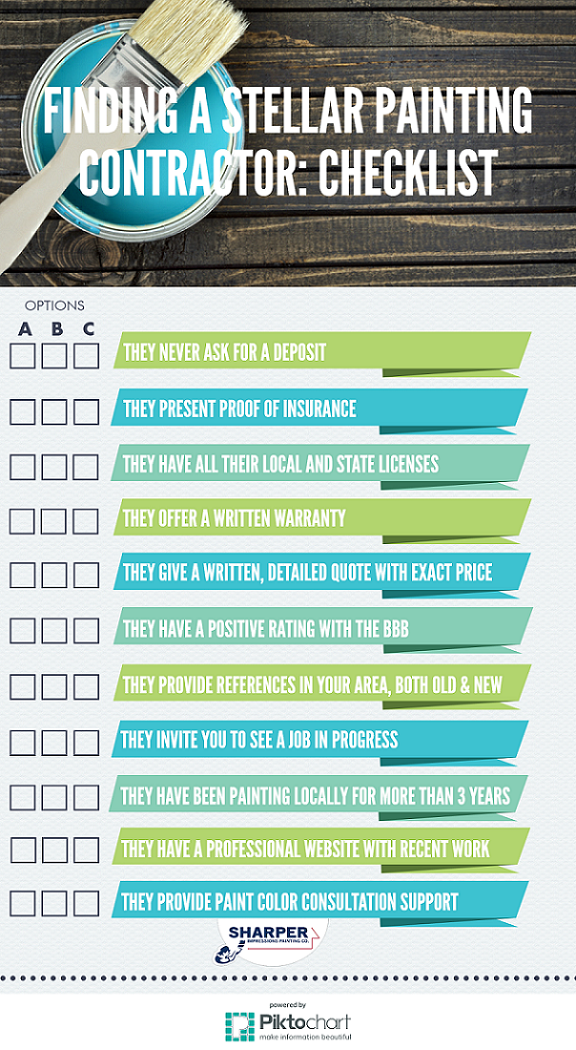When Making A Decision In Between Exterior And Interior Paint, Understanding Their Essential Differences Can Transform Your Job-- Find What You Need To Understand Prior To You Begin
When Making A Decision In Between Exterior And Interior Paint, Understanding Their Essential Differences Can Transform Your Job-- Find What You Need To Understand Prior To You Begin
Blog Article
Written By-Hastings Meyers
When you're choosing between exterior and interior paint, it's necessary to recognize their basic differences that impact both performance and looks. Interior paints are crafted for lower VOC degrees and smoother coatings, making them suitable for interior spaces, while outside paints are developed to endure extreme weather conditions and UV exposure. Each kind serves a distinctive function, but knowing when to use one over the other can greatly affect your project's result. So, what factors should you think about when making your option?
Make-up and Solution
When picking in between exterior and interior paint, understanding their structure and formulation is crucial. Interior paints typically consist of a lower amount of unstable natural substances (VOCs), making them more secure for interior air top quality. You'll discover they typically have a smoother surface, which enhances their ability to stand up to discolorations and allows for simpler cleansing. They're developed to hold up against the roughness of interior environments, consisting of varying humidity levels and temperature level fluctuations.
On the other hand, outside paints are created to endure harsher conditions. They generally contain higher degrees of pigments and additives to stand up to fading from UV rays, in addition to to stop mold and mold and mildew growth. Their composition includes much more binders and materials, which provide much better adhesion to surface areas subjected to the elements. This ensures the paint can withstand rain, snow, and changing temperature levels without peeling or splitting.
Performance and Resilience
Evaluating performance and resilience is crucial when choosing in between exterior and interior paint. Interior paint is developed for surface areas that experience much less deterioration. It usually withstands fading and scuffing, making it perfect for living rooms and bedrooms. Nonetheless, it might not stand up well in high-moisture areas like kitchens and bathrooms without proper formulation.
On the other hand, exterior paint encounters harsher problems. It's crafted to stand up to UV rays, rainfall, and temperature level changes. This kind of paint often contains ingredients that avoid mold and mildew and mold growth, making sure long life in different climates. When you utilize exterior paint, you can anticipate it to last a number of years much longer than indoor paint, provided it's applied correctly.
One more vital difference depends on the coating alternatives. Interior paints usually have a selection of finishes for aesthetic allure, while outside paints focus on toughness over sheen. If you're seeking something that can handle the components, exterior paint is your best choice.
On the other hand, if you're focused on indoor aesthetics with much less issue for extreme problems, indoor paint may be suitable. Inevitably, your choice should align with the details needs of the environment.
Aesthetic Factors to consider
A fresh coat of paint can change a room, yet aesthetic considerations play an essential function in your selection in between interior and exterior choices. When you're selecting paint, think of the mood you wish to produce. Interior paint permits you to check out a bigger series of colors and coatings, allowing you to share your personal design and boost your home's atmosphere. Whether you select soft pastels or vibrant shades, the appropriate indoor paint can make your areas feel comfy, lively, or tranquil.
On the other hand, outside paint needs to align with your home's architecture and the surrounding environment. Below, you're not just making a design statement; you're additionally taking into consideration curb allure. Choosing colors that harmonize with your community can improve your home's value and visual charm. Bear in mind that exterior paint is also based on fading and climate changes, so picking a classic shade can conserve you from constant repainting.
Eventually, take into consideration how each choice fits your vision. By straightening your paint option with your desired visual, you can produce spaces that mirror your character while preserving capability.
https://archive.curbed.com/2016/10/7/13174886/interior-designer-painting-tips
When it pertains to picking paint, understanding the essential distinctions in between interior and exterior choices is crucial. Inside paints concentrate on looks and reduced VOCs, making them perfect for enhancing your interior areas. On the other hand, exterior paints are created for sturdiness and weather condition resistance, shielding your home from the elements. By considering your details requirements and the setting, you can confidently select the best paint to achieve the look and longevity you want for your space.
